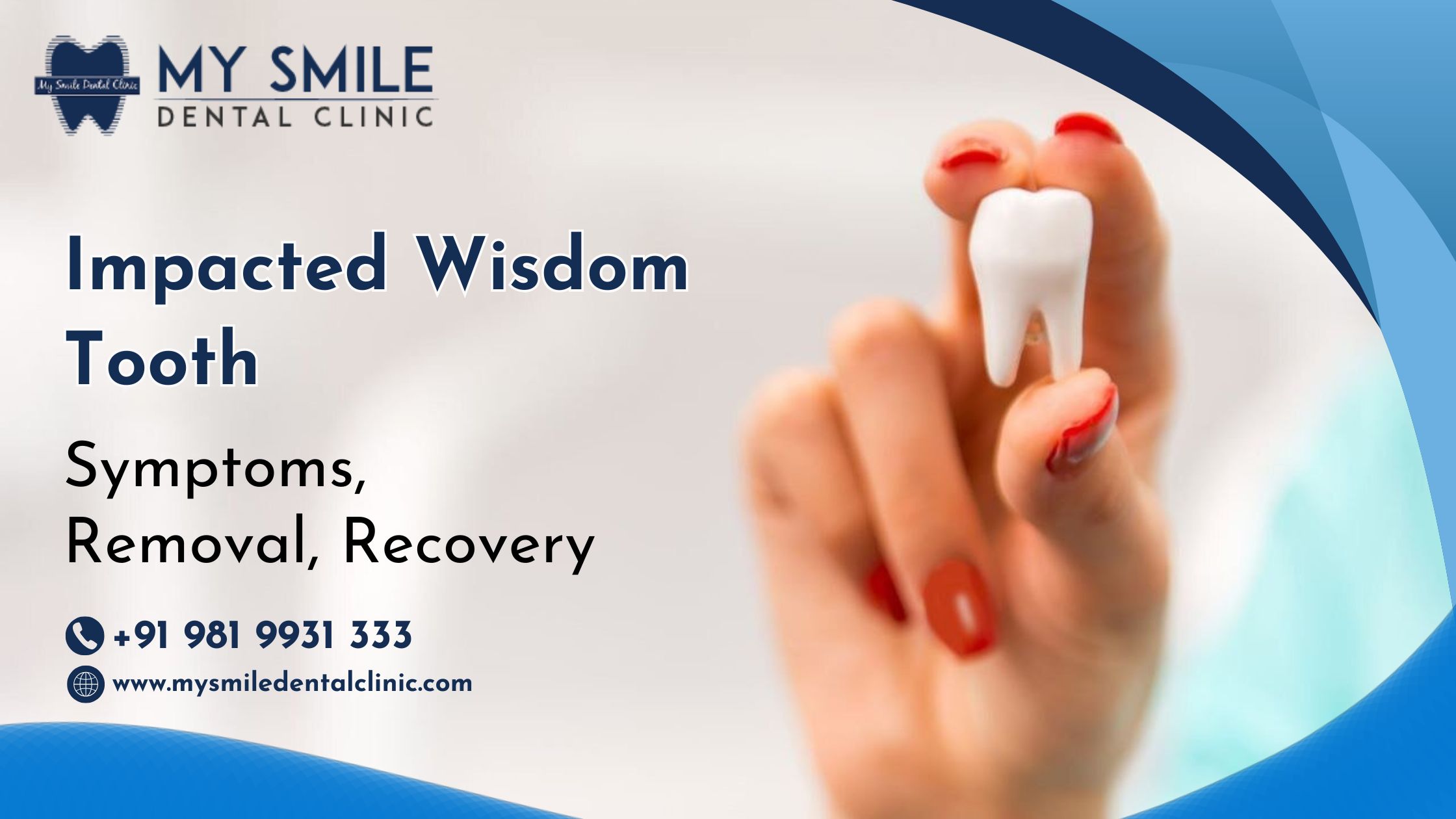
The last set of teeth to erupt are the wisdom teeth, also known as third molars, which typically erupt between the late teens and mid-twenties. While some people have no trouble with their wisdom teeth, others experience complications when these teeth become impacted, meaning they are unable to emerge properly due to a lack of space or improper alignment. This can lead to discomfort and other oral health issues.
Here’s an overview of the symptoms, removal process, and recovery tips for impacted wisdom teeth to help you understand and address this condition.
Symptoms of an Impacted Wisdom Tooth
Impacted wisdom teeth may not always cause noticeable problems, but when they do, the signs can be difficult to ignore:
Pain at the Back of the Mouth
You might feel a persistent ache or sharp pain near the molars, particularly when biting or chewing.
Gum Swelling and Tenderness
Inflamed, swollen, or tender gums near the affected tooth are common. This irritation can worsen if left untreated.
Difficulty Moving the Jaw
An impacted wisdom tooth can limit jaw movement, making it uncomfortable to open your mouth fully.
Bad Odor or Taste
Food debris trapped near the impacted tooth can lead to bad breath or a lingering bad taste in your mouth.
Radiating Pain
The pressure from an impacted tooth can cause discomfort that spreads to the ears or head.
How Are Impacted Wisdom Teeth Removed?
When an impacted wisdom tooth leads to pain, infection, or other complications, removal is often recommended. The procedure is generally safe and performed by a dentist or oral surgeon.
Steps in the Procedure
Assessment and Imaging
Your dentist will examine the area and take X-rays to determine the tooth's position and the best approach for extraction.
Anesthesia
Depending on the complexity, the procedure may be done with local anesthesia, sedation, or general anesthesia.
Tooth Extraction
An incision is made in the gum tissue to access the tooth. In some cases, the tooth is divided into sections to make removal easier.
Closing the Wound
The gum may be stitched closed to promote healing, and a gauze pad will be placed to minimize bleeding.
Recovery After Wisdom Tooth Removal
Healing after wisdom tooth extraction typically takes about one to two weeks. These tips can help speed up the recovery process:
Manage Discomfort
Take prescribed pain relievers or recommended over-the-counter medications. Use ice packs during the first 24 hours to control swelling.
Eat Soft Foods
Stick to easy-to-eat options like soups, mashed foods, or yogurt. Avoid hard or crunchy foods until your mouth heals.
Practice Gentle Oral Care
Rinse your mouth gently with warm salt water after 24 hours. Brush carefully, avoiding the extraction site.
Avoid Disruptive Habits
Activities like smoking or using straws can dislodge the protective blood clot, leading to complications like dry socket.
Rest and Stay Hydrated
Allow your body to heal by resting adequately and drinking plenty of water.
When to Seek Help
While most recoveries are uneventful, you should contact your dentist if you notice:
1. Persistent or severe pain after a few days 2. Uncontrolled bleeding or excessive swelling 3. Signs of infection, such as fever or unusual discharge
Impacted wisdom teeth can lead to considerable discomfort if left untreated. Identifying the symptoms early and seeking professional dental care can help prevent further complications. With the expertise of a skilled dental professional, the removal process is straightforward, and the recovery is typically smooth and manageable.
For expert advice and treatment, consult us for wisdom tooth removal in Andheri West to address your concerns effectively and ensure optimal oral health.

